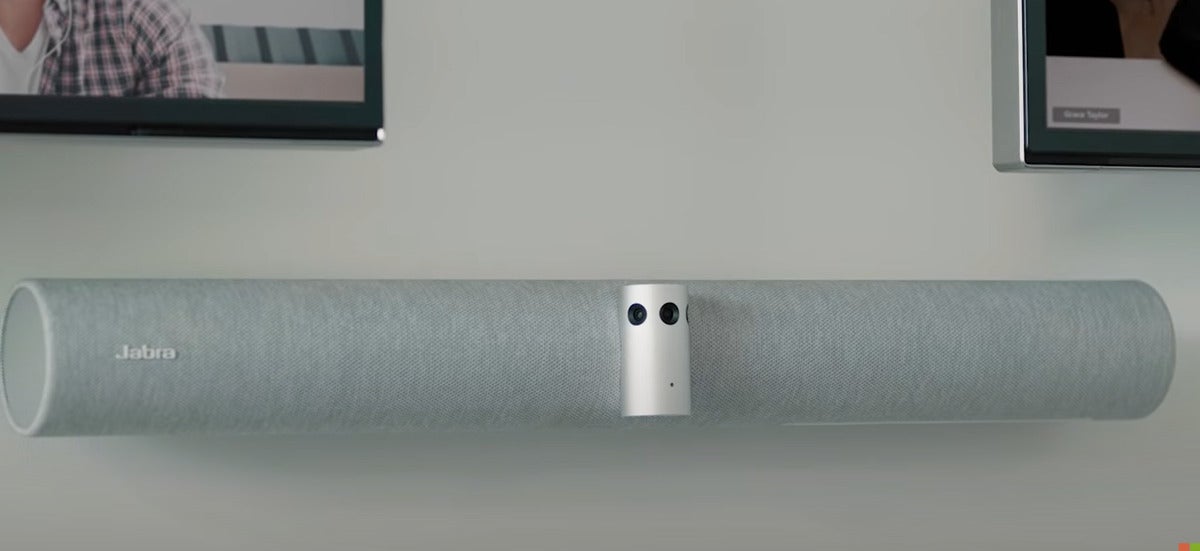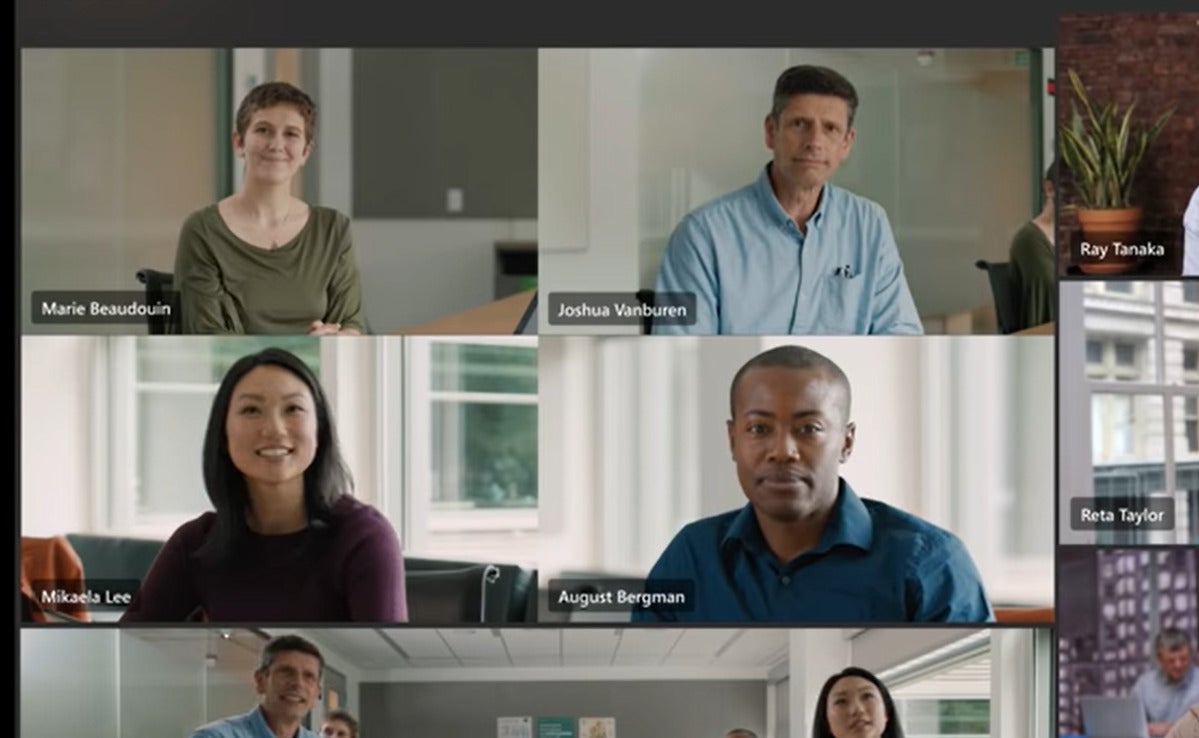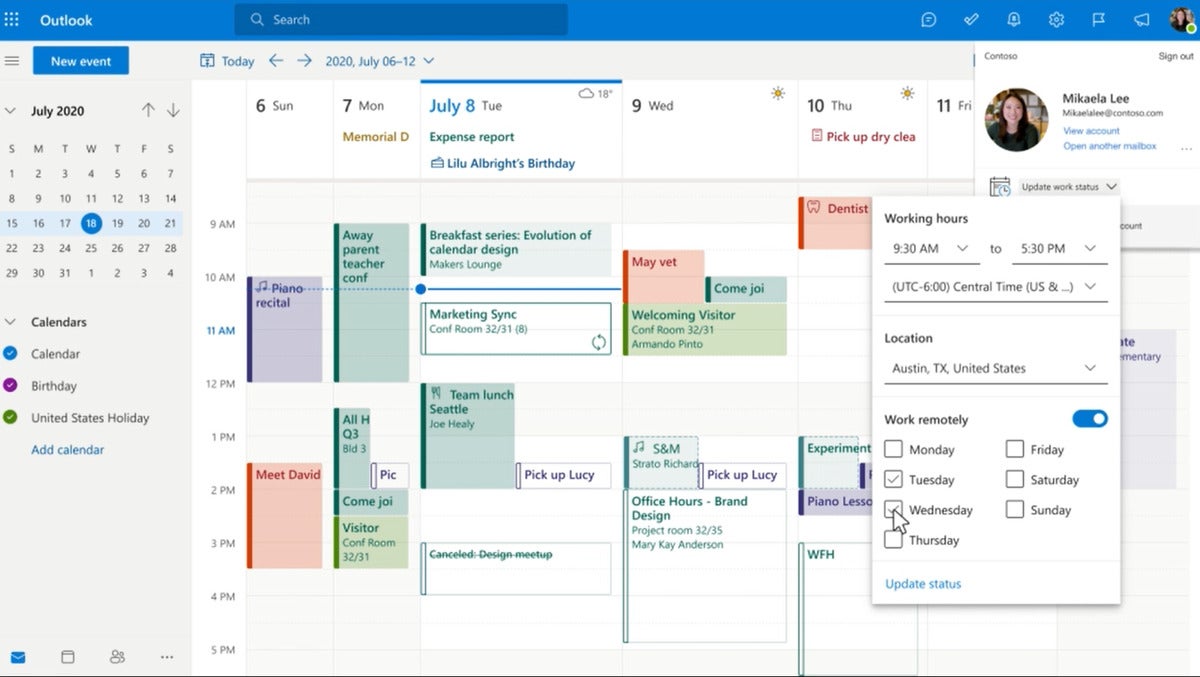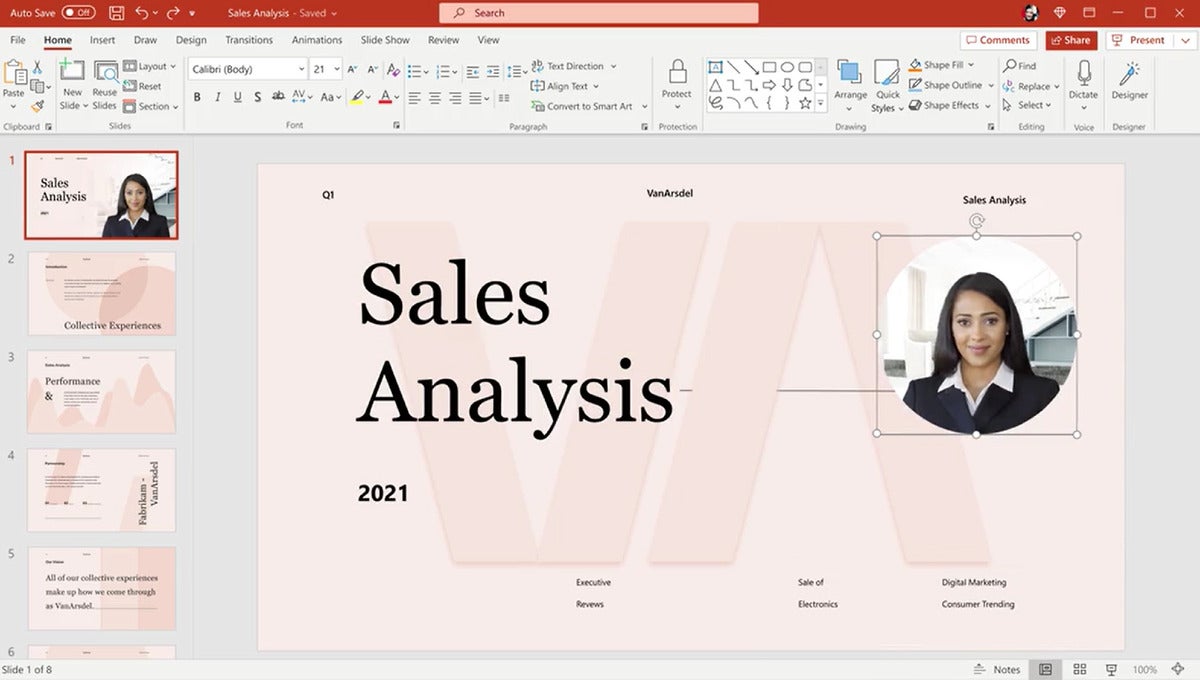Office's future of work swipes ideas from 2010's Xbox

 Image: Microsoft
Image: MicrosoftIn 2010, Microsoft’s Kinect smart camera recognized you and logged you in to your Xbox. Now Microsoft is applying the same principles to meetings, announcing support for a future lineup of intelligent cameras that will zoom in and highlight you in hybrid meetings.
Support for intelligent cameras in Microsoft Teams is just part of several announcements Microsoft made Thursday regarding the future of so-called hybrid work, where employees navigate between working at home and in the office. New features include the ability to tell coworkers whether you’ll be working from home or in the office via Outlook, be it your weekly schedule or an RSVP for a specific meeting, and to stream video of yourself as you present a PowerPoint presentation.
Intelligent meeting cameras represent the evolution of Microsoft’s approach to hybrid work. Microsoft chief executive Satya Nadella has noted the so-called “hybrid paradox”: According to Microsoft’s own surveys, 70 percent or so of people want to return to an in-person environment—but those 70 percent also demand the flexibility to work from home, too. Microsoft has tried to bridge that gap by offering technology that ensures even remote workers feel part of a meeting, including smart speakers, life-size Surface Hub displays, and presenting speaker video so that their eye lines intersect yours.
Intelligent cameras are the next step. The simplest point of comparison is the 2010 Xbox Kinect, a smart camera that recognized you and logged you in to your Xbox. The Kinect faded away as it failed to gain traction with game developers and consumers shied away from paying more for an already expensive console. But Microsoft said Thursday that Kinect-style facial recognition will be included as part of smart cameras from Jabra, Neat, Poly, and Yealink in the coming months and added as updates throughout 2022.
 Microsoft
MicrosoftA prototype Jabra smart camera designed for conference rooms.
Here’s how the Microsoft-powered intelligent cameras will work: first, they’re designed to recognize you, identifying you within the meeting. Second, AI will watch your mouth and gestures to determine whether you’re speaking, giving you more screen real estate if Teams is set up to prioritize speakers. Finally, though the camera will actually be capturing one stream of the entire room, that same AI will “break out” individual streams from the video and simulate the effect of a video window dedicated to each person.
 Microsoft
Microsoft Teams will “break out” the panorama image that it captures (partially shown at the bottom of the screen) into individual video feeds.
That all assumes that cameras of any kind are in play. According to a Frost & Sullivan survey cited by Microsoft, only 7.8 percent of all meeting rooms are video-enabled. Microsoft’s argument is that a central speaker for remote users (“Hi, can you hear me?”) isn’t good enough, and makes remote users feel like secondary participants. Until these intelligent cameras debut, Microsoft said it believes a good alternative is to simply bring your laptop to a meeting, turn the audio off, and let your user-facing webcam create a video window that can appear alongside everyone else.
New hybrid work features appearing in Teams, Outlook, and more
Microsoft’s other Office apps are also receiving updates designed to power hybrid work, with some using AI to drive them, too.
As Microsoft tends to do, Teams is assimilating features that have been rolled out in other contexts, too. In March, Microsoft rolled out Presentation Coach, where AI analyzes various aspects of your PowerPoint presentation and offers advice. Now that same AI is being applied to Teams, where a new Speaker Coach feature will advise you on how quickly you’re speaking, warn you if you’re interrupting, and remind you to ask for questions. Speaker Coach will debut in 2022, Microsoft said.
Outlook is being slightly revamped to take advantage of remote work, too. For one, RSVPing to a meeting is being reworked: Outlook will now allow those who respond to specify whether they’ll be working at home or in the office, prompting organizers to come up with a hybrid solution if enough participants are working remotely. Microsoft is also introducing what it calls “working hours” for you to manually announce your location for the week, whether it be in the office or at home, and on what days. These new features will roll out early next year, Microsoft says.
 Microsoft
Microsoft Outlook will include the ability to let your coworkers know where you’ll be: either at home, at the office, or elsewhere.
PowerPoint is also adopting a feature that other presentation apps have long offered: the ability to remotely “present” your slides by appearing in a small video window as the slides cycle through. Microsoft calls this experience “Cameo,” and says it will debut in early 2022. The idea is that remote users can still present slides using PowerPoint Live’s web app, while using their Teams camera to appear live. Standalone apps like mmhmm still appear to offer more flexibility, with custom backgrounds and other effects, but it’s still a feature that Microsoft has been overdue in offering.
 Microsoft
Microsoft PowerPoint Cameo will allow you to stream yourself as you make a presentation.
Finally, Teams is also gobbling up “hot-desking” capabilities that have been offered by competitors, though that feature will be added to the Lenovo ThinkSmart view display by the end of 2021.





